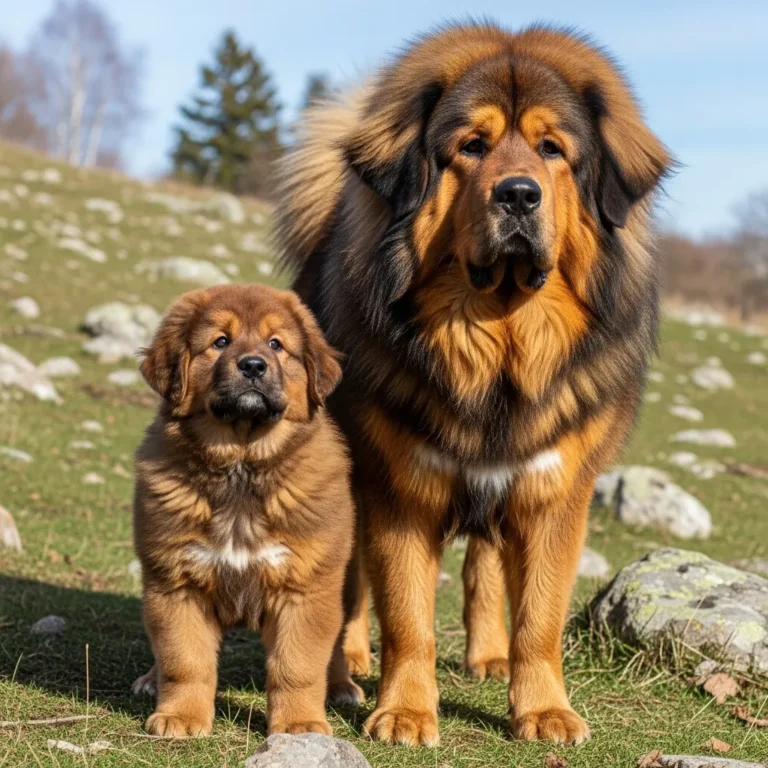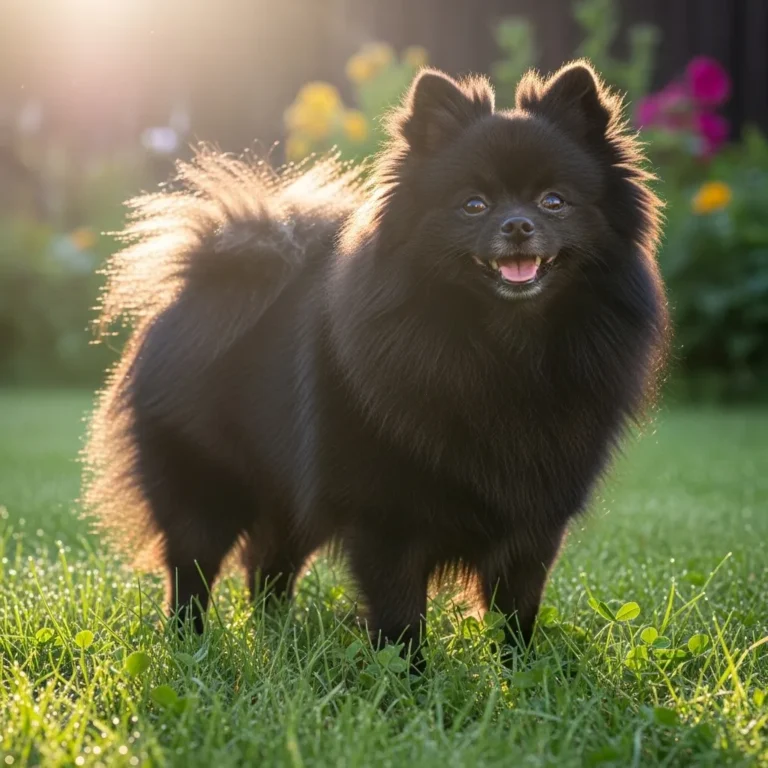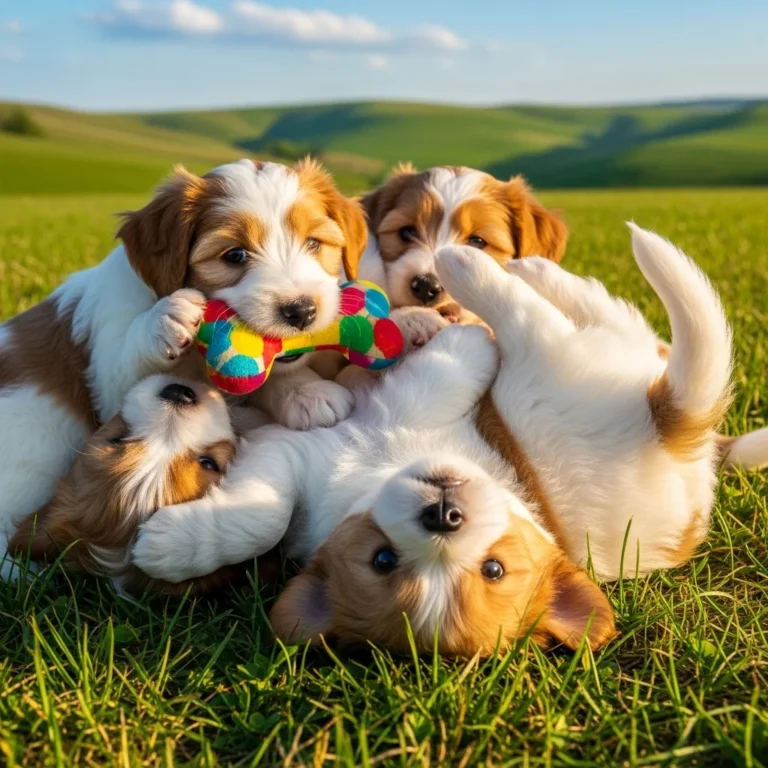
Author: DogsBlogSS Team
⚠️ Disclaimer: This article is for informational purposes only and is not a substitute for consulting a veterinarian.
tibetan mastiff puppy
There’s something undeniably magical about seeing a Tibetan Mastiff puppy for the first time. With their fluffy lion-like mane, soulful eyes, and quiet confidence, they already give off the aura of a dog who has stories older than we are. For centuries, these dogs guarded ancient monasteries and Himalayan villages, watching over people, livestock, and sacred grounds. Today, they’re making their way into family homes worldwide — but this is not a breed you simply “adopt on a whim.”
Bringing home a Tibetan Mastiff puppy is a life-changing commitment. These pups grow into massive, independent thinkers who need structure, respect, and patience. They can be deeply loyal companions, but only for owners who truly understand what they’re signing up for.
To help you figure out whether this remarkable breed fits your lifestyle, this guide breaks down every essential question future owners ask — from temperament and training to cost, grooming, health, and daily care.
Suitability & Temperament (The “Is This Dog Right for Me?” Phase)
Is a Tibetan Mastiff puppy suitable for first-time dog owners?

Most experts agree: Tibetan Mastiffs are not ideal for first-time dog owners.
The American Kennel Club (AKC) describes them as “strong-willed, independent, and highly protective dogs best suited for experienced owners.”
the breed’s independence is rooted in their history as autonomous guardians who often made decisions without humans nearby. This translates into a puppy who will question commands, test boundaries, and expect mutual respect.
Why first-time owners struggle:
- They train more like a cat than a Labrador.
- They dislike repetition.
- They are not motivated by food the way other breeds are.
- Their protective nature intensifies as they mature.
If you’re new to dogs, this breed can feel overwhelming unless you have professional guidance and strong dedication.
(Source: American Kennel Club)
Are Tibetan Mastiffs good family dogs and safe around children?
Tibetan Mastiffs can be wonderful family dogs, but they bond deeply with their “pack” and guard them intensely.
Pros with kids
- Loyal and protective
- Usually calm indoors
- Gentle with children they were raised with
Important considerations
- They may be wary of visiting children or noisy playdates.
- Rough play can trigger protective behavior.
- Supervision is essential for all large breeds.
With the right socialization, they can be loving guardians, but they are not a “nanny dog.”
(Source: American Kennel Club )
Do Tibetan Mastiffs get along with other dogs and pets?
This depends heavily on socialization and gender pairing.
“Tibetan Mastiffs often show same-sex aggression as they mature, even if they were friendly puppies.”
General tendencies
- Better with opposite-sex dogs
- Can be dominant with same-sex dogs
- High prey drive toward small animals
- Cats vary depending on puppyhood exposure
If you have other pets, especially another large guardian breed, careful planning is essential.
(Source: about outdoors, American Kennel Club )
tibetan mastiff puppy price
How much does a Tibetan Mastiff puppy actually cost?
This is where many people are shocked. Tibetan Mastiffs are one of the most expensive dog breeds in the world — but not for the mythical “$1 million lion dogs” often exaggerated in viral stories.
Realistic prices from reputable breeders:
- Pet quality: $2,000 – $5,000
- Show/breeding quality: $6,000 – $12,000
- Imported high-lineage puppies: $8,000 – $20,000 (sometimes more)
Why are Tibetan Mastiffs so expensive compared to other breeds?
Several reasons contribute to the higher cost:
1. Rarity
They are not commonly bred due to the small global population.
2. Health testing
Breeders must screen for hip dysplasia, elbow dysplasia, thyroid issues, and more. Testing can exceed $2,000 per breeding pair.
3. Small litters
Most litters range from 4–6 puppies.
4. Importation costs
Many top-quality dogs come from Tibet, Nepal, or European lines.
5. Slow maturation
They take 3–5 years to mature — ethical breeders don’t overbreed their females.
How can I distinguish a purebred Tibetan Mastiff from a mix?
You can avoid scams by checking for:
Key physical traits
- Massive head with strong muzzle
- High-set tail that curls over the back
- Double coat with lion-like mane
- Heavy bone structure
Documentation
- AKC or FCI registration
- Pedigree papers
- Health certificates
Avoid breeders advertising “lion type” or “tiger type” — these are marketing terms, not actual categories.
Physical Characteristics & Growth (The “Giant” Factor)
How big do Tibetan Mastiff puppies get and when do they stop growing?
A Tibetan Mastiff’s growth is slow and steady.
Average adult size
- Males: 90–150 lbs (40–68 kg)
- Females: 70–120 lbs (32–54 kg)
Growth Timeline
- 6 months: Already 50–70 lbs
- 12 months: 70–100% of height, but still slim
- 24–36 months: Filling out
- 4–5 years: Full maturity
Do Tibetan Mastiff puppies shed a lot?
Surprisingly, they don’t shed much until spring — then they “blow coat,” meaning they shed large chunks of their undercoat.
Expect:
- Light shedding year-round
- Heavy shedding once or twice annually
Weekly brushing helps keep the coat healthy, especially during shedding season.
Are Tibetan Mastiffs hypoallergenic?
Despite having a long coat, they produce normal levels of dander.
If allergies are a concern, meet the dog before committing.
(Source: American Kennel Club:)
Behavior & Training (The “Challenge” Phase)
Why is my Tibetan Mastiff puppy so stubborn during training?
This breed is known for intelligence — but not obedience.
“Independent breeds aren’t disobedient; they just don’t see the point in repeating commands.”
Training tips
- Use short sessions
- Keep training varied
- Reward with affection or play, not just food
- Start early and stay consistent
This is a dog that respects confident leadership, not force.
(Source:American Tibetan Mastiff Association, American Kennel Club )
Are Tibetan Mastiffs aggressive?
They are protective, not inherently aggressive.
Territorial instinct is part of their DNA. Aggression usually arises when:
- They are poorly socialized
- They lack structure
- They feel threatened
(Source: American Kennel Club)
Do Tibetan Mastiffs bark a lot at night?
Yes — this is one of their biggest challenges.
Historically, they guarded villages from nocturnal predators.
So nighttime barking is instinctive.
What helps reduce barking
- Bring them indoors at night
- Provide structured exercise
- Desensitize them to outside noises
- Use white noise machines
Leaving them outside overnight almost guarantees barking.
How do I socialize a Tibetan Mastiff puppy effectively?
Socialization must start early — ideally between 8–16 weeks.
Essential exposures
- Children
- Men with beards/hats
- Other dogs
- Veterinarians
- Grooming tools
- Loud noises
- Visitors to your home
Care, Health & Living Conditions (The Daily Routine)
Can a Tibetan Mastiff live comfortably in an apartment?
Yes — but only with the right routine.
Tibetan Mastiffs are surprisingly calm indoors. However:
- They need a secure outdoor area for daily exercise.
- They can’t be left alone for long periods.
- Neighbors may complain about barking.
If you live in an apartment, choose a quieter location and prioritize daily walks and mental stimulation.
How much exercise does a growing Tibetan Mastiff puppy need?
Too much exercise can damage developing joints.
Recommended
- Controlled walks
- Gentle play
- No running on hard surfaces
- No forced jogging
- No jumping from heights
What are the common health issues in Tibetan Mastiff puppies?
Common concerns include:
- Hip dysplasia
- Elbow dysplasia
- Hypothyroidism
- Entropion (inward-rolling eyelids)
- Canine inherited demyelinative neuropathy (CIDN)
Choose breeders registered with OFA and who perform health testing on all parents.
(Source: dogtime ,petmd , American Kennel Club )
What is the best diet for a Tibetan Mastiff puppy?
Unlike many giant breeds, Tibetan Mastiffs often thrive on moderate-protein diets to help control growth and reduce joint stress.
Healthy diet guidelines
- Avoid high-calorie puppy foods
- 22–24% protein is usually ideal
- Avoid rapid growth formulas
- Split meals to prevent bloat
- Include omega-3s for joint health
Final Thoughts
A Tibetan Mastiff puppy is not just a pet — it’s a long-term partner, a guardian, and a majestic part of your home. They are loyal, observant, independent, and deeply affectionate to those they trust. But they require experience, consistent guidance, and a lifestyle that respects their heritage.
If you’re ready for the challenge, you’ll gain one of the most extraordinary companions the canine world has to offer.
Notice : The DogsBlogSS editorial team is dedicated to providing accurate, research-based information about dog health, behavior, and care. All our articles are fact-checked using trusted veterinary sources such as VCA Hospitals, Merck Vet Manual, and the AKC.
you may like it










